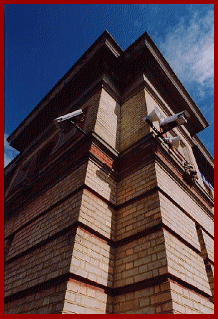| ||||||||||||||||||||||||||||||
Welcome to the | ||||||||||||||||||||||||||||||
 | ||||||||||||||||||||||||||||||
 | ||||||||||||||||||||||||||||||
All you need to know about lenses, | ||||||||||||||||||||||||||||||
There will however be the occasional project where existing CCTV lenses cannot provide the ‘pulling power’ of a massive telephoto lens, and purchasing a chunky motorised zoom simply for a fixed camera application such as covert surveillance, may not seem terribly sensible ... even if the bank manager does agree to the loan! Fortunately there is a more reasonable and affordable alternative... ... Photographic lenses! Because the lenses are made for the much larger 35mm format, picture quality is extremely impressive, to put it mildly. To give you some idea of what’s possible, using a standard 200mm focal length optic on a high performance 1/3” CCD camera, you should be able to fill the monitor screen with an adult standing 100 metres away from the camera. To put that performance in perspective, the same lens used on a 35mm photographic camera would be a 4x magnification optic (50mm is the standard lens for this format), but on the 1/3” CCD, that becomes a 25x magnification beast. If you really need to put some distance between the camera and the subject, then you’ll have to bring out the ‘big cats’. CAT or catadioptric lenses to give them their proper title, work pretty much on the same principle as a reflector telescope, with internal corrected mirrors used to fold up the light rays inside the lens, so long focal length inside a short optical package! More recently, some Mega Pixel camera manufacturers have started using photographic lenses on their very high resolution cameras; indeed some high end imagers are actually being produced in a standard 35mm format.
| ||||||||||||||||||||||||||||||
 | ||||||||||||||||||||||||||||||
IMPORTANT: No material may be reproduced, copied or redistributed from this site, © doktorjon.co.uk 2004 - 2008 Homepage...:...Gateway...:...Technical Gateway....:....Quickfind Index....:....Equipment Directory | ||||||||||||||||||||||||||||||

